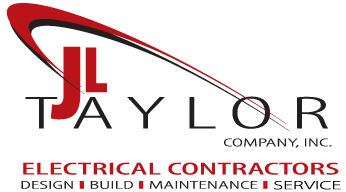Preventing Injuries Through Electrical Safety Programs
A well-designed electrical safety policy is paramount in protecting employees
By Adam Tiber & Timothy Pool
JL Taylor Company/Tec Inc.
From 2012 to 2016, there were a total of 5,720 injuries in the U.S. due to direct exposure to electricity, according to an NFPA research report published in May 2018 by Richards Campbell. The report defines direct exposure to electricity as “direct contact with a power source, such as contact with live electrical wiring or being struck by an electrical arc.”
Starting in January of 2015, Federal OSHA required reporting of every hospitalized injury related to arc flash. The fact is OSHA is serious about arc flash and we should be too. Not having an electrical safety policy or regular electrical safety training to teach your employees about the subject and working guidelines of arc flash can lead to serious problems – not just possible litigation for your company but the potential injury of your employees or subcontractors working within your facility. You may say, “I never work on electrical equipment ‘hot,'” but the measuring voltage while the equipment is energized is considered working on energized electrical equipment and requires your compliance with NFPA 70E The Standard for Electrical Safety in the Workplace. Educating yourself and your company on electrical safety and creating an electrical safety policy is the key to creating an electrical safety culture within your workplace.
There are two categories of electrical injuries: electrical shock and electrical burns. Most injuries are electrical shock injuries on circuits less than 250 volts. Half of reported electrical accidents involve non-electrical workers and the highest number of fatalities occurred in establishments with 10 or fewer employees. Unfortunately, these smaller establishments usually have less structured safety training programs and practices.
In an electrical arc blast, energy is released from the contact point. Copper expands by a factor of 67,000 times when it turns from a solid to a vapor. This expansion results in the release of high-pressure waves, sound and molten shrapnel. Completing a hazard risk assessment at your facility determines the severity of the potential energy released.
According to NFPA 70E, there are two methods to perform a hazard risk assessment: the Category Method and a Hazard Risk Analysis. Both methods require calculating the available fault current and the clearing time of the overcurrent protection device ahead of the incident contact point. Based on the risk assessment results, approach boundaries are calculated and the flash protection boundary is determined. The arc flash boundary is the distance where the energy level reaches a value of 1.2 cal/cm2sometimes siz to 10 feet from the contact point, depending ont eh result of the risk analysis. Personal Protective Equipment (PPE) is then used by qualified persons when working on energized equipment and is selected based on the incident energy level determined as a result of the risk assessment.
Electrical accidents continue to happen in our industry at an alarming rate. Electrical accidents can be more easily reported with today’s healthcare system and modern recording technology used by employees at most companies. Proper planning to implement an electrical safety program to instruct proper work practices when working on energized equipment and to identify the hazard risk assessment will serve to limit employee accidents and company liability should an electrical accident occur.
Service Areas
Proudly serving the following locations and regions.
Contact Us Today
© Copyright 2015-2019 JL Taylor Company OH LIC#: 21927 | Developed by Ethode

